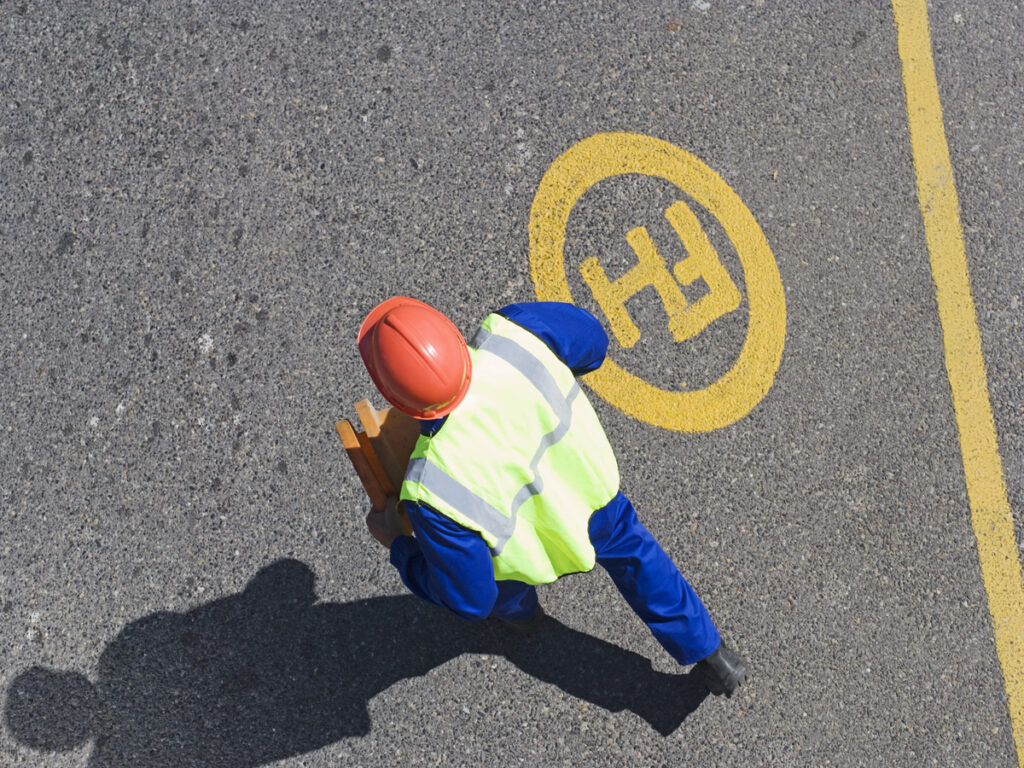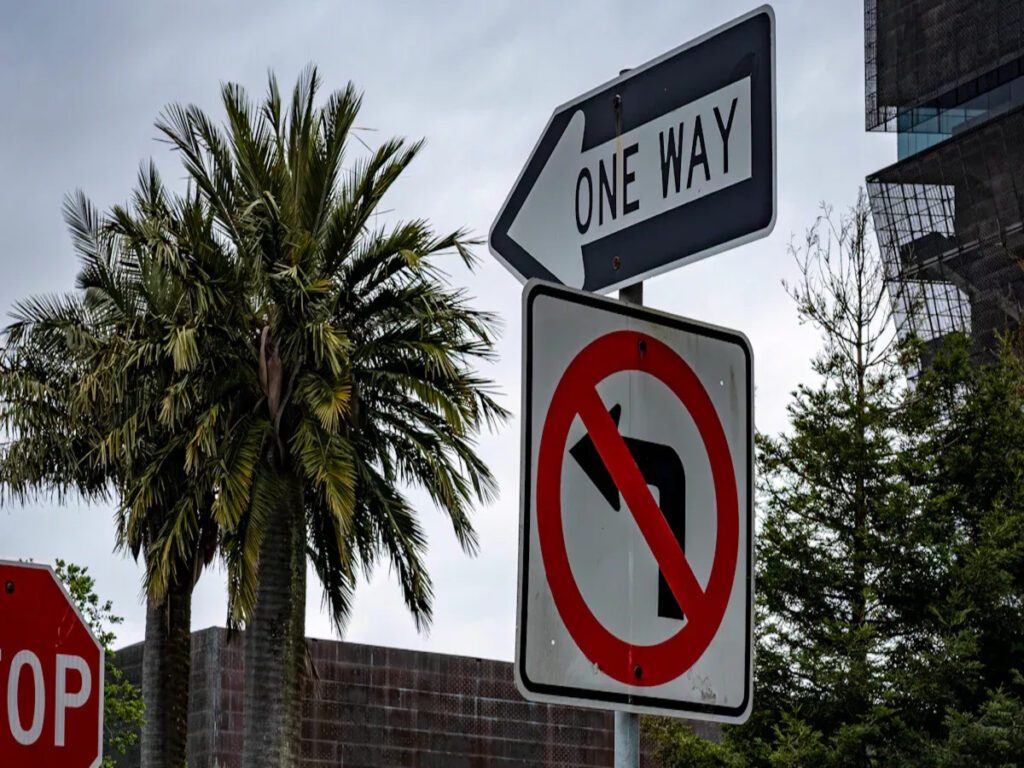
Verkehrskegel spielt eine entscheidende Rolle in der Verkehrssicherheit, Führung von Fahrern und Fußgängern durch Bauzonen und Umwege. Die Wirksamkeit dieser Verkehrskegel hängt weitgehend von den Materialien ab, die im Verkehrskegelbau verwendet werden. Drei essentielle Materialien dominieren dieses Feld: PVC, Pe, und Gummi. Jeder bietet einzigartige Vorteile. PVC Bietet Haltbarkeit und Wetterbeständigkeit, während Pe ist bekannt für seine leichte Natur und ihre Schlagfestigkeit. Gummi, auf der anderen Seite, bietet hohe Haltbarkeit und Flexibilität. Die Auswahl des richtigen Materials sorgt für die Langlebigkeit und Wirksamkeit unter verschiedenen Bedingungen.
PVC In der Herstellung von Verkehrskegeln

Eigenschaften von PVC
Haltbarkeit und Flexibilität
Wenn Sie die im Verkehrskegelbau verwendeten Materialien betrachten, PVC fällt auf seine Haltbarkeit und Flexibilität ab. Dieses Material kann verschiedenen Umgebungsbedingungen standhalten, Es ideal für den Außengebrauch im Freien. PVC -Verkehrskegel sind bekannt als “unkrassierbare Verkehrskegel” Weil sie sich beugen können, wenn sie von einem Fahrzeug angefahren werden, Reduzierung der Beschädigung sowohl des Kegels als auch des Autos. Diese Flexibilität stellt sicher, dass die Zapfen ihre Form im Laufe der Zeit behalten, Bereitstellung eines zuverlässigen Service für Jahre.
Wetterwiderstand
PVC bietet exzellenten Wetterwiderstand, das ist entscheidend für Verkehrskegel den Elementen ausgesetzt. Diese Kegel widersetzen Feuchtigkeit und UV -Strahlen, Aufrechterhaltung ihrer leuchtend orange Farbe auch unter hartem Sonnenlicht. Diese Funktion stellt sicher, dass die Zapfen sichtbar und effektiv für den Verkehr leiten, Unabhängig von den Wetterbedingungen.
Vorteile der Verwendung von PVC
Kosteneffizienz
Einer der bedeutenden Vorteile von PVC ist seine Kosteneffizienz. PVC -Verkehrskegel sind erschwinglich zu produzieren, sie zu einer beliebten Wahl für groß angelegte Verkehrsmanagementprojekte machen. Die Haltbarkeit des Materials bedeutet auch, dass Sie die Zapfen nicht häufig ersetzen müssen, Auf lange Sicht Geld sparen.
Vielseitigkeit im Design
PVC Ermöglicht die Vielseitigkeit des Designs, Ermöglicht den Herstellern, verschiedene Arten von Verkehrskegeln zu erstellen, um verschiedenen Anforderungen gerecht zu werden. Egal, ob Sie Zapfen mit reflektierenden Streifen für eine verbesserte Sichtbarkeit in Situationen mit schlechten Lichtverhältnissen oder Kegel mit Gummibasen für zusätzliche Stabilität benötigen, PVC kann diese Anforderungen berücksichtigen. Diese Anpassungsfähigkeit macht PVC eine bevorzugte Wahl für die Produktion Verschiedene Arten von Verkehrskegeln.
Bewerbungen in Verkehrskegel
Gemeinsame Verwendungen
PVC -Verkehrskegel werden üblicherweise in Straßenbaugebieten verwendet, Parkplätze, und Eventmanagement. Ihre hohe Sichtbarkeit und Haltbarkeit machen sie geeignet, um Fahrer und Fußgänger sicher durch diese Bereiche zu führen. Die Plastikverkehrskegel’ Leichte Natur erleichtert sie auch leicht zu transportieren und einzurichten, Verbesserung ihrer Praktikabilität.
Spezifische Szenarien
In bestimmten Szenarien, wie Nachtstraßenarbeit oder unerwünschte Wetterbedingungen, PVC -Verkehrskegel als von unschätzbarem Wert erweisen. Ihre reflektierenden Bänder sorgen für eine hohe Sichtbarkeit, während ihre robuste Konstruktion den Herausforderungen solcher Umgebungen stand. Diese Funktionen machen PVC ein wesentliches Material in Verkehrskegelarten Entwickelt für anspruchsvolle Anwendungen.
Pe In der Herstellung von Verkehrskegeln
Polyethylen, allgemein bekannt als PE, spielt eine wichtige Rolle bei der Herstellung von Verkehrskegeln. Dieses Material ist ein bedeutender Bestandteil des globalen Kunststoffmarktes, Hervorhebung seiner Bedeutung in verschiedenen Anwendungen, einschließlich Verkehrsmanagement.

Eigenschaften von pe
Leichte Natur
PE fällt nach seiner leichten Natur auf. Sie können leicht umgehen und transportieren PE -Verkehrskegel Aufgrund ihres reduzierten Gewichts. Diese Eigenschaft macht sie ideal für Situationen, in denen eine schnelle Bereitstellung und Entfernung erforderlich sind. Im Gegensatz zu normalen Plastikverkehrskegeln, PE -Zapfen bieten eine einfache Gebrauchsnutzung, ohne die Leistung zu beeinträchtigen.
Schlagfestigkeit
Eine weitere bemerkenswerte Eigenschaft von PE ist seine Wirkungsfestigkeit. Wenn Fahrzeuge diese Plastikverkehrskegel versehentlich getroffen haben, Sie absorbieren den Einfluss effektiv, Schaden minimieren. Diese Funktion stellt sicher, dass PE -Verkehrskegel ihre Form und Funktionalität auch nach wiederholten Auswirkungen beibehalten, sie zu einer zuverlässigen Wahl für das Verkehrsmanagement machen.
Vorteile der Verwendung von PE
Leichte Handhabung
Der Umgang mit PE -Verkehrskegeln ist aufgrund ihres leichten Designs unkompliziert. Sie können sie schnell einrichten oder nach Bedarf entfernen, Dies ist besonders vorteilhaft in dynamischen Verkehrssituationen. Diese einfache Handhabung verringert die Zeit und den Aufwand für Verkehrsmanagementaufgaben.
Umweltvorteile
PE bietet auch Umweltvorteile. Dieses Material ist recycelbar, Beitrag zu Nachhaltigkeitsbemühungen. Durch Auswahl der PE -Verkehrskegel, Sie unterstützen umweltfreundliche Praktiken und reduzieren Abfall, Ausrichtung auf globale Initiativen zur Minimierung der Umweltauswirkungen.
Bewerbungen in Verkehrskegel
Temporäres Verkehrsmanagement
PE -Verkehrskegel zeichnen sich in temporären Verkehrsmanagementszenarien aus. Ihre leichte und langlebige Natur machen sie perfekt für kurzfristige Projekte oder Veranstaltungen. Sie können sich auf Verkehrskegel verlassen, um klare Anleitung und Sichtbarkeit zu erhalten, Sicherheitssicherheit sowohl für Fahrer als auch für Fußgänger sicherstellen.
Langzeitinstallationen
Für langfristige Installationen, PE -Verkehrskegel bieten Haltbarkeit und Belastbarkeit. Sie halten verschiedenen Wetterbedingungen wider und halten ihre Wirksamkeit über längere Zeiträume aufrecht. Dies macht sie für dauerhafte oder semi-permanente Verkehrsmanagementlösungen geeignet, wo Zuverlässigkeit entscheidend ist.
Gummi In der Herstellung von Verkehrskegeln
Gummi spielt eine entscheidende Rolle bei der Herstellung von Gummiverkehrskegeln, Bieten Sie einzigartige Eigenschaften an, die es zu einer idealen Wahl für bestimmte Anwendungen machen. Wenn Sie diese Eigenschaften und Vorteile verstehen.
Eigenschaften von Gummi
Hohe Haltbarkeit
Gummi fällt auf seine hohe Haltbarkeit ab. Dieses Material kann wiederholte Verformungen und Stoßdämpfung standhalten, Es ist perfekt für Umgebungen, in denen Verkehrskegel konstant wirken. Im Gegensatz zu anderen Materialien, Gummi behält seine Integrität auch bei starkem Gebrauch bei, Stellen Sie sicher, dass die Kegel im Laufe der Zeit funktionsfähig bleiben.
Flexibilität und Griff
Die Flexibilität von Gummi ermöglicht es Gummi-Verkehrskegeln, sich zu biegen, ohne zu brechen, Bereitstellung von Widerstandsfähigkeit unter verschiedenen Bedingungen. Diese Flexibilität verbessert auch die Griffigkeit, sorgt dafür, dass die Gummileitkegel auch auf rutschigem Untergrund an Ort und Stelle bleiben. Sie können sich darauf verlassen, dass Verkehrskegel aus Gummi ihre Position halten, bietet konsequente Führung und Sicherheit.
Vorteile der Verwendung von Gummi
Stabilität unter verschiedenen Bedingungen
Verkehrskegel aus Gummi bieten Stabilität in verschiedenen Umgebungen. Ob bei Nässe oder Trockenheit, Diese Kegel bieten eine hervorragende Traktion, Verringerung der Gefahr des Ausrutschens oder Umkippens. Aufgrund dieser Stabilität eignen sie sich für anspruchsvolle Anwendungen, bei denen normale Leitkegel möglicherweise nicht ausreichen.
Recyclabalität
Gummi ist recycelbar, Beitrag zur ökologischen Nachhaltigkeit. Indem Sie sich für Leitkegel aus Gummi entscheiden, Sie unterstützen umweltfreundliche Praktiken, Verringerung von Abfällen und Förderung der Wiederverwendung von Materialien. Diese Recyclingbarkeit entspricht den globalen Bemühungen, um die Umweltauswirkungen zu minimieren, Gummi zu einer verantwortungsvollen Wahl für das Verkehrsmanagement machen.
Bewerbungen in Verkehrskegel
Hochleistungsverkehrsmanagement
In Hochleistungs-Verkehrsmanagementszenarien, Gummiverkehrskegel Excel. Ihre Haltbarkeit und Stabilität machen sie ideal für Bereiche mit hohem Fahrzeugfluss oder Bauzonen. Sie können vertrauen, dass diese Zapfen den Anforderungen solcher Umgebungen standhalten, Sicherheit und Sichtbarkeit gewährleisten.
Hochverkehrsgebiete
Gummiverkehrskegel sind in hohen Gefangenen in Bereichen mit hohen Handeln besonders wirksam. Ihr Griff und ihre Flexibilität sorgen dafür, dass sie an Ort und Stelle bleiben, Bereitstellung von Fahrern und Fußgängern zuverlässige Anleitung. Diese Zapfen sind wichtig, um Ordnung und Sicherheit an geschäftigen Orten aufrechtzuerhalten, wo verschiedene Arten von Verkehrskegeln Schwierigkeiten haben könnten, umzugehen.

Vergleich der im Verkehrskegelbau verwendeten Materialien
Haltbarkeit und Langlebigkeit
Bei der Auswahl von Materialien für den Verkehrskegelbau, Haltbarkeit und Langlebigkeit sind Schlüsselfaktoren. PVC Und Gummi sind bekannt für ihre hohe Haltbarkeit, sie für den langfristigen Gebrauch geeignet machen. Die Wetterbeständigkeit von PVC stellt sicher, dass er seine Farbe und Form im Laufe der Zeit beibehält, Auch unter harten Bedingungen. Gummi, mit seiner Flexibilität und Griff, stand wiederholte Auswirkungen und Verformung, Es ist ideal für Hochleistungsverkehrskegel. Pe, während leicht, Bietet eine hervorragende Wirkung Widerstand, Sicherstellen, dass die Zapfen nach mehreren Treffern funktionsfähig bleiben. Jedes Material bietet einzigartige Vorteile, Aber Gummi übertrifft andere in anspruchsvollen Umgebungen oft aufgrund seines außergewöhnlichen Widerstands gegen Abrieb und Auswirkung.
Kostenüberlegungen
Cost plays a significant role in selecting materials for traffic cone construction. PVC is often the most cost-effective option due to its affordability and durability. You can produce PVC traffic cones at a lower cost, making them a popular choice for large-scale projects. Pe, with its lightweight nature, also offers cost benefits by reducing transportation expenses. Gummi, Obwohl zunächst teurer, provides long-term savings due to its durability and recyclability. When considering cost, it’s essential to balance initial expenses with the longevity and performance of the traffic cones.
Umweltauswirkungen
Environmental considerations are increasingly important in traffic cone construction. PE and rubber offer environmental benefits due to their recyclability. By choosing these materials, Sie unterstützen umweltfreundliche Praktiken und tragen zu Nachhaltigkeitsbemühungen bei. Eva, obwohl weniger verbreitet, bietet auch Vielseitigkeit und Umweltvorteile. PVC, während langlebig, stellt Herausforderungen in Bezug auf Rezykluabilität dar. Jedoch, Fortschritte bei Recycling -Technologien tragen dazu bei, diese Probleme zu mildern. Bei der Auswahl von Materialien, Berücksichtigen Sie die Umweltauswirkungen und wählen Sie Optionen aus, die mit globalen Nachhaltigkeitsinitiativen übereinstimmen.
Auswahl des richtigen Materials für Verschiedene Arten von Verkehrskegeln
Durch die Auswahl des richtigen Materials für Verkehrskegel beinhaltet das Verständnis der spezifischen Anforderungen Ihrer Anwendung. Jedes Material bietet unterschiedliche Vorteile, Machen Sie es für verschiedene Arten von Verkehrskegeln geeignet. Durch Berücksichtigung verschiedener Faktoren, Sie können sicherstellen, dass Ihre Wahl den Anforderungen Ihrer Umgebung entspricht und die Sicherheit verbessert.

Faktoren zu berücksichtigen
- Haltbarkeit und Langlebigkeit: Sie sollten beurteilen, wie lange der Verkehrskegel in seiner beabsichtigten Umgebung dauern wird. PVC und Gummi sind bekannt für ihre Haltbarkeit, sie ideal für den langfristigen Gebrauch machen. Gummi, insbesondere, Excels in Hochleistungsanwendungen aufgrund seines Widerstands gegen Abrieb und Auswirkung.
- Kosten: Betrachten Sie das Budget für Ihr Projekt. PVC ist oft die kostengünstigste Option, Erschwinglichkeit und Haltbarkeit bieten. Pe, with its lightweight nature, kann die Transportkosten senken. Obwohl Gummi möglicherweise höhere anfängliche Kosten haben, Die Langlebigkeit und Recyclingfähigkeit können im Laufe der Zeit zu Einsparungen führen.
- Umweltauswirkungen: Bewerten Sie die ökologischen Auswirkungen Ihrer Wahl. PE und Gummi bieten Recyclingabilität, Unterstützung umweltfreundlicher Praktiken. Während PVC beim Recycling Herausforderungen stellt, Fortschritte in der Technologie tragen dazu bei, diese Probleme anzugehen. Die Auswahl von Materialien, die sich an Nachhaltigkeitsinitiativen ausrichten, ist von entscheidender Bedeutung.
- Sichtweite: Stellen Sie sicher, dass das Material unter verschiedenen Bedingungen eine hohe Sichtbarkeit beibehält. Der Wetterbeständigkeit von PVC hilft ihm, seine helle Farbe zu behalten, während Reflexionsbänder die Sichtbarkeit in schlechten Lichtsituationen verbessern können.
- Spezifische Anwendungsbedürfnisse: Unterschiedliche Szenarien erfordern verschiedene Arten von Verkehrskegeln. Zum Beispiel, Hochleistungsverkehrskegel aus Gummi sind für hochverkehrsberufliche Bereiche geeignet, Während PE -Zapfen aufgrund ihrer einfachen Handhabung ideal für temporäre Setups sind.
Anwendungsspezifische Empfehlungen
- Reguläre Verkehrskegel: Für den allgemeinen Gebrauch, wie die Führung des Verkehrs auf Parkplätzen oder bei Veranstaltungen, PVC-Kegel bieten ein Gleichgewicht zwischen Kostenwirksamkeit und Haltbarkeit. Ihre Flexibilität und ihr Wetterwiderstand machen sie zu einer zuverlässigen Wahl.
- Hochleistungsverkehrskegel: In Bauzonen oder Bereichen mit hohem Fahrzeugfluss, Gummizapfen bieten die notwendige Haltbarkeit und Stabilität. Ihr Griff und ihre Flexibilität sorgen dafür, dass sie an Ort und Stelle bleiben, Bieten Sie konsequente Anleitung.
- Temporäre Installationen: PE-Zapfen eignen sich perfekt für kurzfristige Projekte. Ihre leichte Natur ermöglicht eine schnelle Bereitstellung und Entfernung, sie für dynamisches Verkehrsmanagement praktisch machen.
- Spezialisierte Verkehrskegelarten: Für einzigartige Anwendungen, Betrachten Sie Eva -Zapfen. Obwohl weniger verbreitet, EVA bietet Vielseitigkeit und Umweltvorteile, Es ist für bestimmte Szenarien geeignet, in denen traditionelle Materialien möglicherweise nicht ausreichen.
Durch sorgfältige Bewertung dieser Faktoren und das Verständnis der spezifischen Anforderungen Ihrer Anwendung, Sie können das am besten geeignete Material für Ihre Verkehrskegel auswählen. Für hochwertige Verkehrsmanagementlösungen, einschließlich dauerhafter Zapfen und anderer Verkehrskontrollgeräte, besuchen OPTsigns. Unsere Produkte sollen die Effektivität und Langlebigkeit Ihrer Verkehrsmanagementanforderungen verbessern.
Im Bereich der Verkehrskegelherstellung, Die Auswahl der richtigen Materialien ist von entscheidender Bedeutung. PVC, Pe, und Gummi bieten jeweils einzigartige Vorteile für verschiedene Arten von Verkehrskegeln. PVC bietet ein dauerhaftes PVC -Material, das Langlebigkeit und hohe Sichtbarkeit gewährleistet. Pe, bekannt für seine wirkungsbeständigen plastischen Eigenschaften, zeichnet sich in temporären Setups aus. Gummi, mit seiner Hochleistungsnatur, passt zu hohen Verkehrsgebieten. EVA -Verkehrskegel verleihen dem Mix Vielseitigkeit. Durch Auswahl des entsprechenden Materials, Sie gewährleisten maximale Sichtbarkeit und Effektivität, Verbesserung der Sicherheit in verschiedenen Umgebungen. Wenn Sie diese Typen verstehen, können Sie fundierte Entscheidungen für Ihre Sicherheitskegelanforderungen treffen.

















